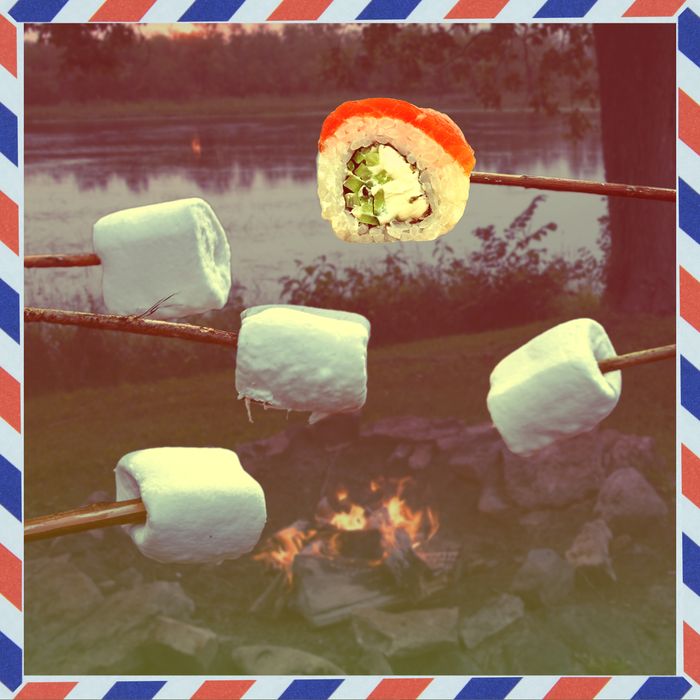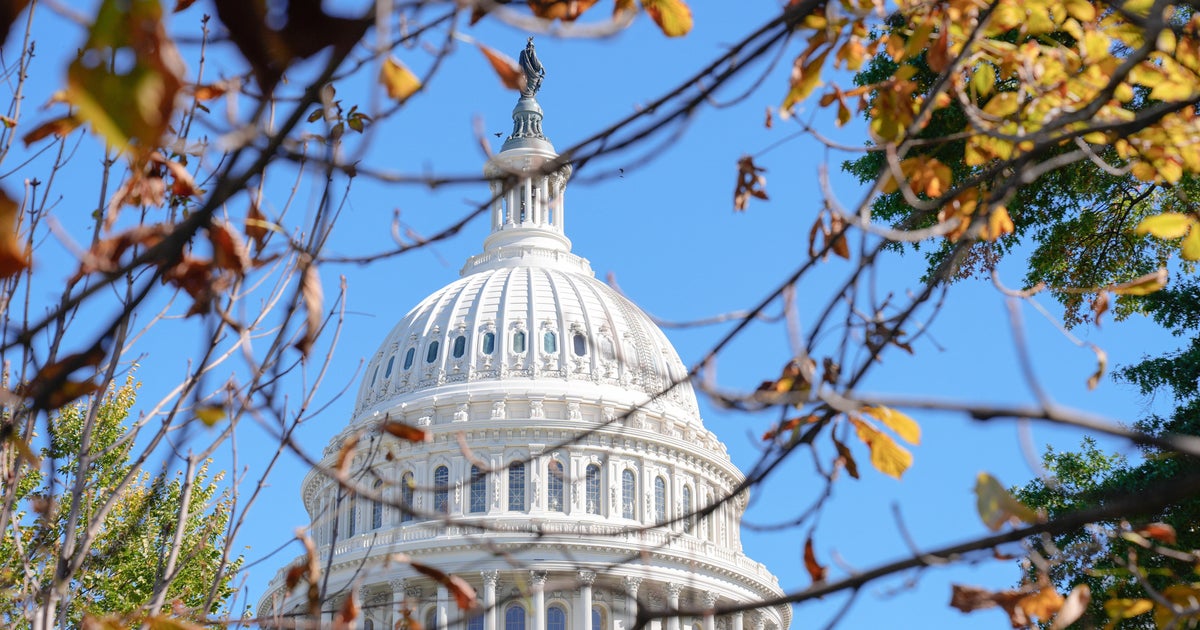
Photo-Illustration: The Cut; Photo: Getty
If you happen to find yourself in Portland, Maine, on Friday, July 18, you might notice a curious influx of visitors: couples in their 40s — the men in slick athleisure, the women wearing designer sunglasses — passing through the lobby of the Press Hotel and eating meals at Scales, an upscale seafood joint on the waterfront. They’ve traveled from places like the Upper East Side and Chappaqua. They all seem to know each other. The dads congregate in hotel bars to talk “finance.” The moms have flawless manicures.
And on Saturday morning at 7 a.m., they’ll pile into their cars — Escalades, Rivians, G-Wagons — to drive up 95 North, eventually turning onto dusty, bumpy, wooded roads, passing signs with names like Camp Vega, Camp Takajo, Camp Mataponi, Camp Laurel, Camp Androscoggin, Camp Matoaka, and Tripp Lake. Once there, they’ll line up behind the other cars and wait until 9 a.m., when the camp gates ceremoniously open. The women will get out first, sprinting away, their Chanel sneakers propelling them over the grass and, finally, into the arms of their children, some as young as 7. The men capture the entire thing with their phones, sending all footage to their wives, who will lovingly document the experience on social media with a simple hashtag: #visitingday.
“In the past couple of years, visiting day has exploded,” says a mom with a son at Camp Takajo and a daughter at Camp Mataponi, both in Naples, Maine, and both with tuitions of $17,000 for the summer (plus additional thousands spent on the requisite clothing, equipment, overnight trips, and, yes, visiting day). Sleepaway camps catering to the privileged East Coast set have been around for the better part of a century, and visiting day, in mid-July, marks the middle of the camps’ seven-week sessions. It’s a chance for children to see their parents and siblings and show off what they’ve been up to — “Look, Mom, I can sail! Look, Dad, I hit a bull’s-eye!” It’s also a chance for parents to temporarily reunite with their children, a moment that may feel particularly emotional this year with the stories of unimaginable loss at Camp Mystic in Texas fresh in all parents’ minds.
But, like other aspects of modern parenting that have been twisted into one-upmanship by social media — expensive “aesthetic” birthday parties, Broadway production–level staged gender reveals — the tradition of visiting day has, in recent years, morphed “from low-key to out of control,” as one mom with a son at Camp Takajo and a daughter at Camp Tripp Lake in Poland, Maine, puts it. (The parents I spoke to for this story have mostly chosen to remain anonymous for fear of both pissing off their children’s camps and being ostracized by their peers.)
The world of sleepaway camps is divided geographically. “Maine camps are the elite of the elite; they basically only have kids from New York City and Westchester,” one mom with kids in Maine camps told me. “The Long Island and New Jersey kids go to camp in upstate New York and Pennsylvania. The visiting days at those camps, like Timber Lake and Tyler Hill, are beyond,” she says, insinuating, for lack of a better word, a certain tackiness to the day there. “The parents can bring as much crap in as they want,” she says. This means suitcases full of gifts. “Everything is personalized — pillows, clothing, stickers. And everyone gets bunk gifts for all the other kids. People are buying $150 perfume for their daughters and Nike Dunks for their sons,” says Illana Lebersfeld, a mom with two daughters at a sleepaway camp who also works for a camp-supply store called Camp Stuff 4 Less in Livingston, New Jersey. “I’ve even seen parents bring 12 packs of very high-end toilet paper,” says a mom with two sons at Brant Lake Camp in upstate New York. The big kahuna of visiting-day merch is Denny’s, a warehouselike store with locations in Long Island, Westchester, and New Jersey, where moms can make “camp appointments” months in advance to load up on everything needed for visiting-day surprises. “If you don’t get your order in on time, you’re screwed,” says one mom.
At Maine camps, in an attempt to tamp down the craziness, there’s a formal limit on how much stuff parents can bring to their campers on visiting day. The camps tend to provide one tote bag for the parents to bring “goodies” in, as the instructions from Camp Takajo refer to them, be that clothing or snacks or “a good book.” (Yeah, right.) In the lead-up to visiting day, kids send letters home with specific requests. In the old days, the wish list might have included a bag of M&Ms or some new shampoo. “Now it’s sushi and Starbucks and Alo Yoga sets,” says a mom with a daughter at Tripp Lake. Though the camps do their best to enforce the one-bag policy, “there are definitely moms who spend the entire time leading up to visiting day thinking of creative ways to bend the rules and max out on the bags,” says one mom.
“I have a friend who spent $3,000 on a cookie cake and a tiered candy tower,” says a Takajo mom. “It gets thrown out right after we leave, it’s such a waste,” she says. The camps confiscate all food after visiting day ends, as it attracts rodents and bugs into the bunks. As such, the Takajo visiting-day instructions practically beg parents to cut down on the excess. “Please be reasonable with the amount of candy and other goodies you bring into camp,” the letter states in bold. “Every year we have several boys who get physically sick because they eat too much candy.”
Bunk gifts are also forbidden at the Maine camps, and one Takajo mom informs me that baseball cards aren’t allowed either. “The boys were trading cards and getting in fights about them, so they were banned,” she says. “But there are always moms still sneaking them in.” Another requirement: bringing your child a “picture wall” of photographs. This seems sweet, I say to the mom who tells me about it — kids wanting to be surrounded by family photos for their last month away from home. Instead, I learned that these are poster-size collages of pictures of your own child and his friends from the previous four weeks of camp, which have been downloaded from Campanion, an app camps use to post pictures of campers. “You have to make a picture wall,” says the mom. “It’s a nonnegotiable.”
This competitive spirit applies to the entire weekend, not just the swag. To start, everything has to be booked at least a year in advance. “The Press is the hot hotel in Portland to go to, but you have to be on some secret list to get into it; half of my town can be found in the lobby,” says one mom from Chappaqua, frustrated that she hasn’t been able to figure out how to book a room there. “That weekend, the hotels around the camps all implement three-night-minimum stays and jack up their price times ten. You think it’s hard getting a dinner reservation in New York on a Saturday night? Try getting into a desirable restaurant in Portland that weekend,” she says.
“You can get a dinner reservation exactly 60 days in advance, so everyone has their alarm set for 6 a.m. on some random day in May. By 9 a.m., the reservations are gone,” says another mom. “I know it sounds crazy, but it’s what people do.”
And there’s the issue of getting up to Maine in the first place, about an eight-hour drive from the Upper East Side. “People now take private planes,” says one mom. “Someone offered to split an Uber chopper with my husband, but we decided against it,” she adds. Another mom confirms the trend. “People fly private, they bring chefs and nannies and housekeepers.” Adds another: “I swear, they’re flying in Nobu sushi for their kids.”
What to wear on the day of has also become an art form, with moms consulting each other on bunk group chats for outfit approval. The current uniform for moms is designer-jean cutoffs, a white tank, and Chanel or Loewe sneakers. “It’s casual but very styled,” says Lebersfeld. “Everyone gets a blowout the day before they come,” confirms another mom. “My first year at Mataponi, I came wearing Hoka sneakers and I quickly realized it was not the right outfit,” says another.
That same mom shares that there are “unspoken rules” for the day, things like how dads will go in the lake with their children but moms won’t. “There’s something not ‘cool’ about moms going in the lake,” she says. I posit that maybe they don’t want to ruin their blowouts, and she agrees that this might be the case.
Besides, there’s always social media to consider, and no one wants to look like a wet rat on their feed. “What happened was, as things do nowadays, a bunch of Instagram-famous moms sent their kids to camp in Maine and started documenting visiting day. Now everyone does the same thing,” she says.
I get the rundown from another mom: “The Something Navy kids go to Vega; the Warby Parker kid goes to Mataponi; The LoveShackFancy kids go to Matoaka.”
“That weekend, visiting day takes over my feed,” says another mom with two boys at Takajo. “It’s all about how fast you run, how fast your kid runs to you, how good your kid looks, how good you look,” says a mom with two daughters at Camp Starlight in Starlight, Pennsylvania. “That’s on Instagram. But then you speak to people in real life, and they’re like, ‘Visiting day was the worst day ever. My kids cried the whole day,’ or whatever.”
Ah yes, real life. In the end, there’s no amount of stuff or competition that can completely distract from a difficult truth about visiting day: It can be an emotional minefield for the campers. “Your children think they want all those creature comforts from home, and so they ask you to bring it all, but it really becomes about spending time with them. It’s emotionally heavy in many ways,” says Becca Kohn, a camp specialist who has two daughters at sleepaway camp.
Growing up in the ’90s, I went to Camp Vega, and I remember hating visiting day. I loved seeing my parents (for the record, my mom usually wore Gap shorts and a T-shirt; she did her hair herself), but I dreaded the moment they’d leave again. I’d cry when I walked them to their car.
During COVID, visiting days were canceled at most camps. Many of the moms I interviewed reminded me of this and how it had been a relief not just for them (“pressure’s off”) but for their children. “Our kids had visiting day canceled for two years in a row because of COVID,” says Lebersfeld. “They were like, ‘Those were the best years.’” Adds a mom with boys at Takajo, “They didn’t have to do the whole emotional reset. We missed them, but it was great for everyone involved. We saved a lot of money, too.”
But that was a moment in time. Visiting day is back on, and this weekend, the mothers, fathers, stepparents, and even grandparents of the wealthiest enclaves of New York will decamp for Podunk, Maine. One mom summed it up without mincing words: “Unfortunately, I would say the parents pretty much lose their minds.”


